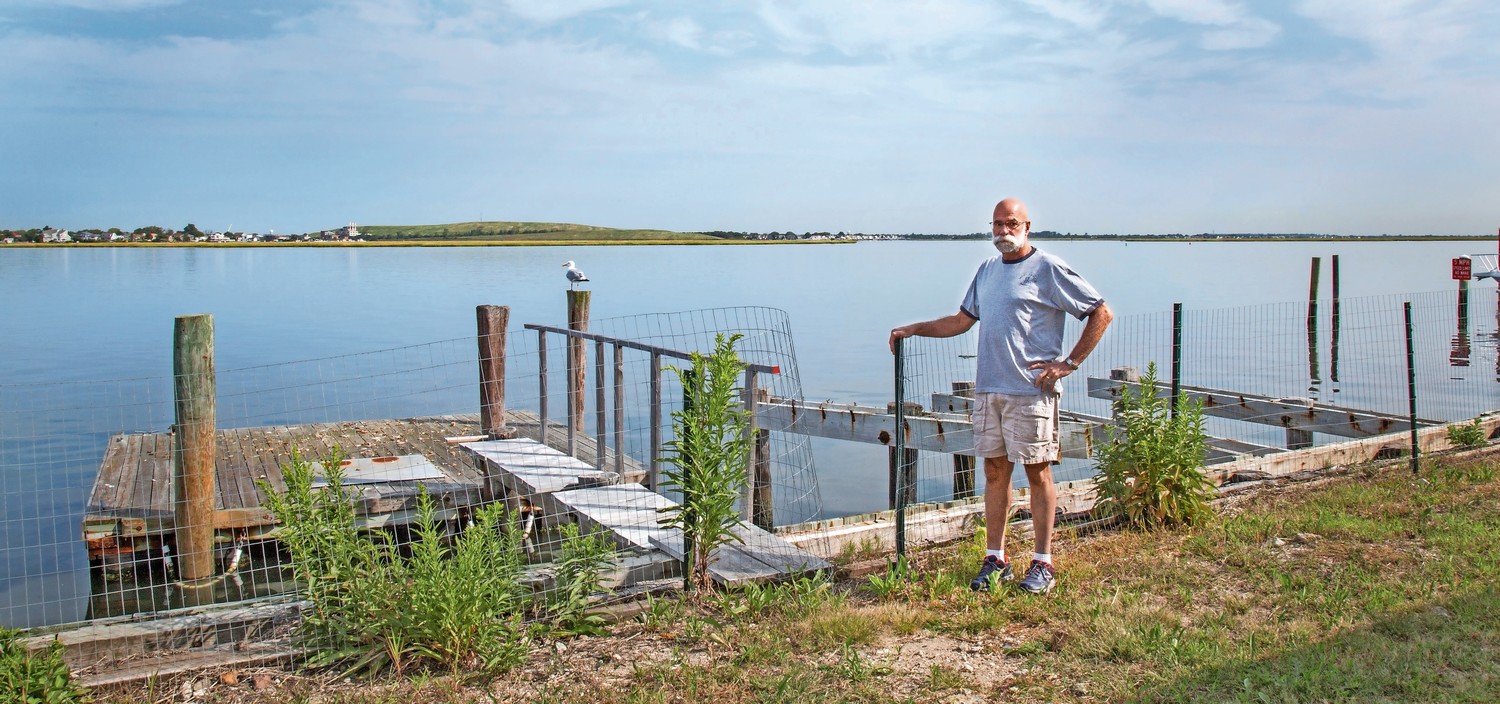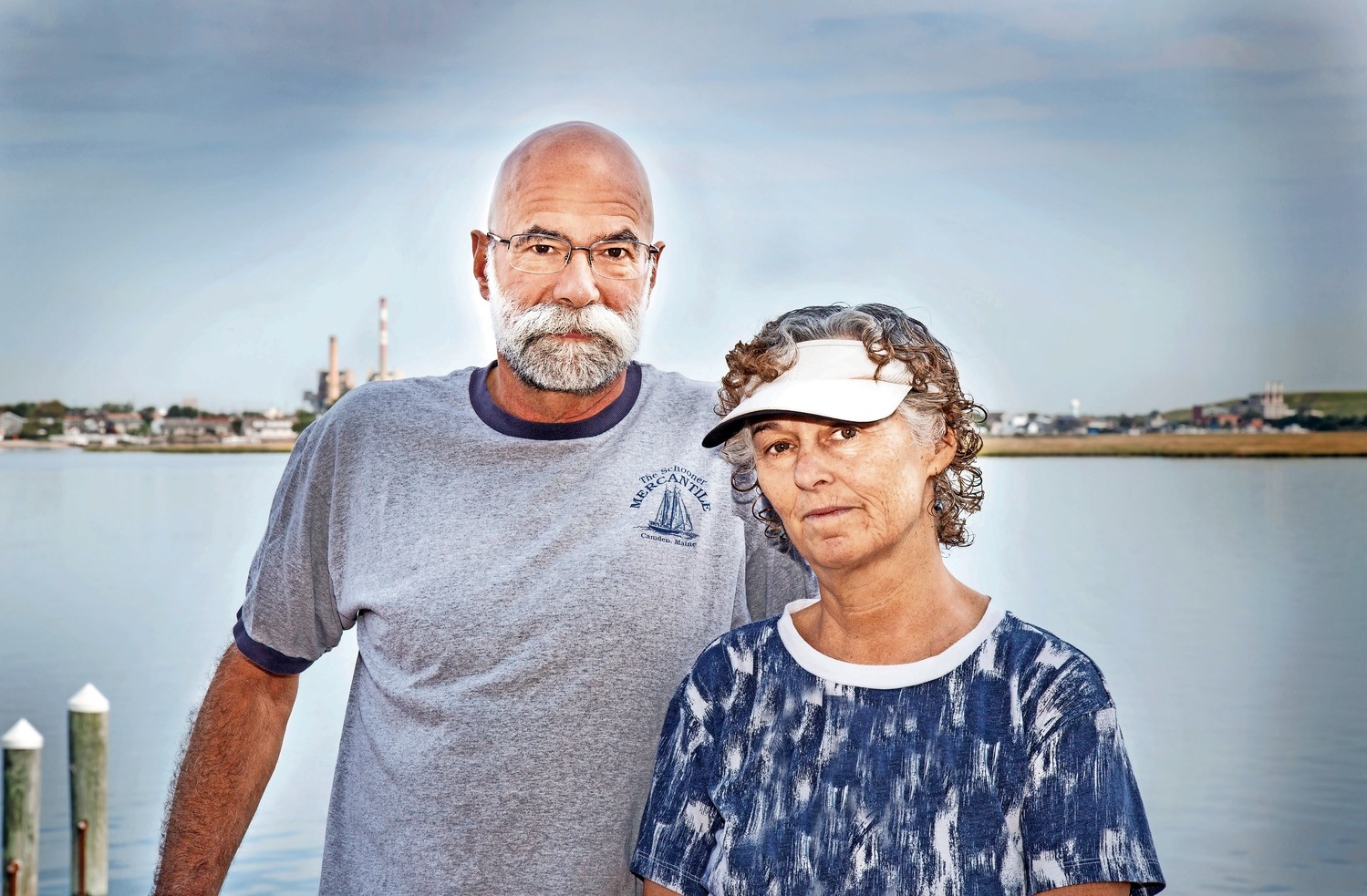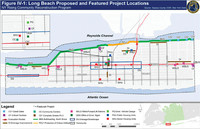Long Beach bulkhead project hits a snag
$12.4 million CRP plan will no longer cover private homes along Reynolds Channel
A state-funded bulkhead project to help protect Long Beach’s north shore from flooding has changed in scope, after the estimated cost of the work along Reynolds Channel more than doubled, forcing the city to revise the plan.
Last October, city officials said that the long-awaited $12.4 million project to protect the bayfront with bulkheading, identified as a priority by Long Beach’s Community Reconstruction Program planning committee, was expected to begin this year.
Eleven months later, at the height of an above-normal hurricane season, many residents say that the project is crucial. Funded by the Governor’s Office of Storm Recovery, it is the committee’s top priority, taking up about half of the $25 million in federal money granted for the CRP.
A separate $20 million bulkhead project along Reynolds Channel, announced by Gov. Andrew Cuomo in 2013 to protect Long Beach’s industrial district from storm surges, is expected to begin next year.
Homeowners who live along the bay suffered some of the worst damage in Hurricane Sandy, and the weakened bulkheads potentially put them and their neighbors at risk for future flood damage, officials said.
“The storm showed the inadequacy of the existing bulkheads, which are too low or non-existent, to provide protection from major storms,” the CRP plan states. New York state approved the project in 2014, and funding was earmarked for the replacement and elevation of bulkheads along the entire north shore.
At the Aug. 15 City Council meeting, however, city officials said that the cost of the work would actually be $28 million, more than double the original projection. And the revised project, which is now expected to begin next year, will only cover bulkheads along public property at the end of streets in the West End, from Magnolia to Laurelton boulevards, as well as two of the city’s three canals. The third canal will be covered by capital funds.
In order to help homeowners rebuild their bulkheads, the council passed a measure last month to issue bonds to fund those individual projects, which can exceed $30,000 per home. The initiative allows the city to obtain permits, hire a contractor and finance the construction, and residents would be required to pay back the cost through a tax surcharge over 20 years.
“The scope of the project has changed,” said John Mirando, the commissioner of public works. The consulting firm provided by the state, he explained, “underestimated the amount of bulkheading that we needed to do.” City and state officials declined to identify the consulting firm.
‘Somebody made a huge screw-up’
A number of residents and committee members criticized the funding gap, saying that the CRP plan called for protecting the city’s entire north shore. Many also questioned why the information was not disclosed sooner.
“When was the fatal error discovered, and why was the committee not brought back to the table?” said John McNally, a CRP committee co-chair. “The entire point behind the bulkheading project was to have a uniform and complete bulkhead along the entire north shore. As it is right now, it sounds like there is no plan to do that. What's being presented is a plan to waste $12.4 million.”
Many homeowners said that the revised plan would offer no protection if they opted not to finance the construction through the city or on their own. “Do you know the absurdity of doing the public bulkheads and not doing the private bulkheads?” said resident Kevin Fox. “I would love to … move my bulkheads up and pay for it. But if I did it, and if my neighbor on my right and my neighbor on my left didn’t do it, why would I do that?”
John Bendo, a committee member and independent candidate running for City Council this year, called the plan a “Swiss cheese protection system.”
“Somebody made a huge screw-up in this,” Bendo told the council. “We probably would have found better uses of the money.”
“Unless you do the whole thing … it’s the weak link in the chain,” said Kirkwood Street resident Lew Dubow.
City Manager Jack Schnirman said that the public portion of the project was a start in providing flood protection in an area that has never had any. “We all share the frustration that we spent a lot of money designing what we thought was a 12-million-dollar thing,” he said. “What we’re doing right now is simply what’s in the city’s authority.”
City uncovers challenges
The state said that its consulting firm envisioned a wooden bulkhead system that would cover the public waterfront to a certain height, though the CRP plan made no mention of wooden structures. City officials said that steel bulkheads would have greatly minimized property damage during construction and avoided the need for residents to build bulkheads on their own. But the state maintained that the scope of that work was not covered by the grant.
Last October, the Herald reported that 40 percent of the project’s design had been completed by an engineering firm hired by the city, Tetra Tech, and city officials said that they were working with regulatory agencies to obtain environmental permits.
Earlier in the design process, according to Jim LaCarrubba, the city’s former public works commissioner who now works as an adviser on resiliency projects in the city, officials had concerns about the initial cost estimates. “Because of the special way you would have to install the bulkhead behind the home — you can’t just drive it in — the vibration could have caused a lot of property damage,” LaCarrubba explained. “They have to be set in a very specific way, and that costs a lot of money, and it drove the cost up.”
“We stopped at the 40 percent design because the estimates were pretty solid,” he added.
Additionally, LaCarrubba and other officials said, a number of private boat docks and decks along waterfront homes would have to be removed during the construction, and the state Department of Environmental Conservation would not have permitted those structures to be rebuilt.
“A lot of those residents came to us and said, ‘Hey, we’re not really interested in you coming back here,’” he said. “It posed an issue for the city.”
Officials push state to reopen NY Rising program for bulkheads
The Governor’s Office of Storm Recovery told the Herald that while funding for the Community Reconstruction Program was earmarked for bulkheads along Reynolds Channel, “Private-property bulkheads were never to be funded by this program.”
State officials said that the project was initially intended to coordinate with NY Rising’s Housing Recovery Program, which closed in March 2016, to help fund privately owned bulkheads.
Many residents, however, said they were led to believe that the CRP would cover their bulkheads, and they now have to decide whether to rebuild them themselves.
Kirkwood Street residents Lew and Amy Dubow said that because they elevated their Hurricane Sandy-damaged home through the NY Rising program, there wasn’t enough available funding to cover bulkhead repairs as well, and they were hoping the CRP plan would do so. Now, the Dubows say, the remaining NY Rising funds could have helped, because enrolling in the city’s new bond program would now cost more than the $40,000 to $50,000 they would spend if they did the work on their own.
“If we knew there was a possibility that the city wasn’t going to do it, we wouldn’t have closed out, and now they’re saying they can’t open it,” Amy Dubow said of the NY Rising program.
“The bulkheads need to be replaced,” her husband added. “Now, it’s a matter of either spending $40,000 or $50,000 to get it all done, or having the city do it and paying it back over 20 years.”
Last month, the city urged the state to extend the bulkhead program for homeowners. A letter obtained by the Herald, signed by the City Council, City Manager Jack Schnirman and State Sen. Todd Kaminsky, stated, “Homeowners understood that the city and GOSR planned to include their bulkhead into the scope of the [NY Rising] project.”
“Initially the project was to include and cover costs for private and public bulkheads, which was explained at a public information open house on March 8, 2016,” the officials wrote. “Unfortunately, project cost projections provided by GOSR’s consultant fell well short of what is needed, and the city was forced to adjust the scope of work as a result.”
Of the 172 addresses that the city sent to the governor’s office requesting an extension of the NY Rising plan, the state said that only 19 had opted into the bulkheading program before the deadline. The state declined the city’s request, saying that it provided ample time and notice for residents to participate.
“We’re working with the state to take care of our residents in the best way possible,” City Manager Jack Schnirman said. “We’ve asked the state to do everything in their power to assist residents with private bulkheads.”












